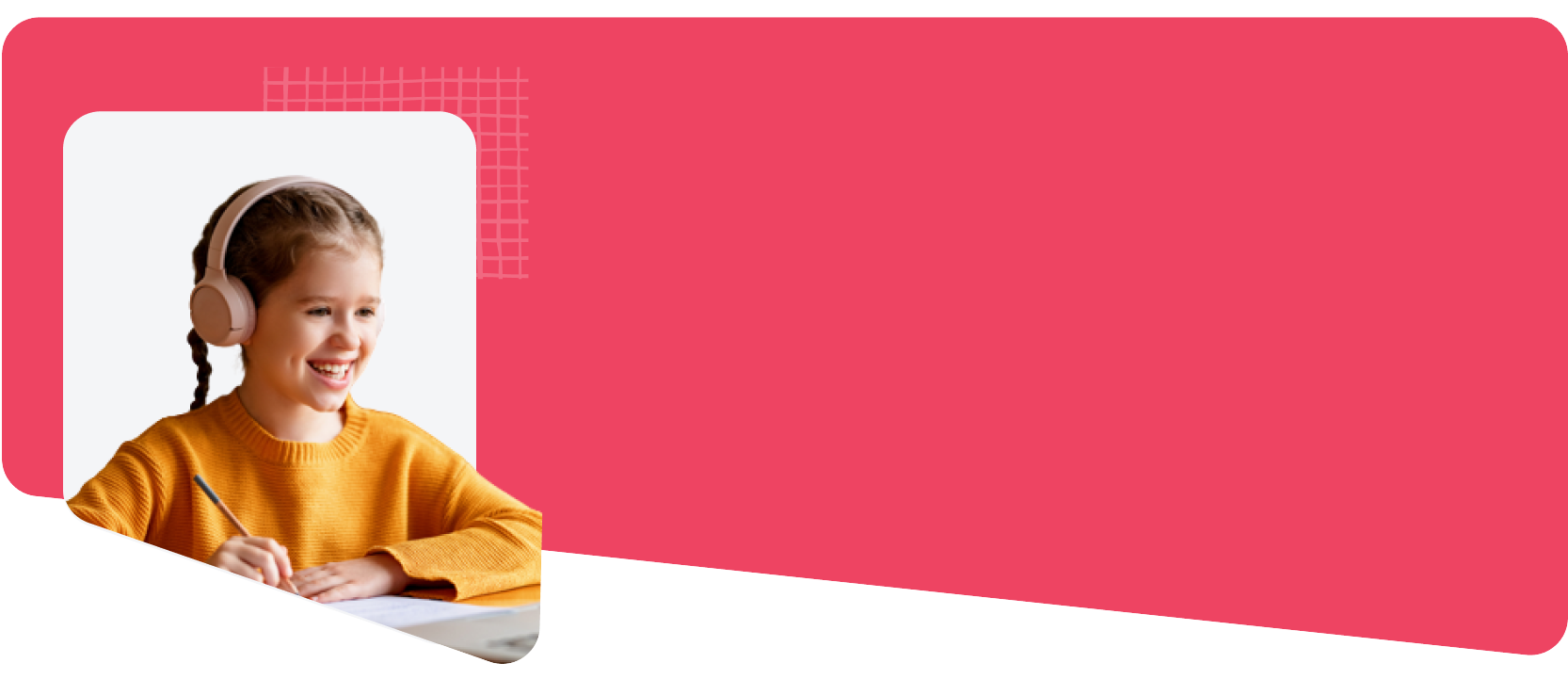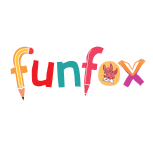Picture a Year 9 classroom filled with quiet excitement. Students sit upright as their teacher begins reading names from a stack of certificates. Some glance nervously at their friends, others beam as their name is called. Among them, a student holds their NAPLAN Certificate of Achievement, a simple piece of paper that carries the weight of months of effort, late-night study sessions, and growing confidence.
When that certificate lands in your child’s hands, it’s a reminder of every story read, every maths problem tried again, and every word rewritten until it finally clicked. It’s a chance for parents to smile and think, “They really did it.”
In this blog, we’ll look at what the NAPLAN Certificate of Achievement means, how it’s awarded, and how you can continue supporting your child’s reading, writing, and numeracy growth at home.
Key Takeaways
-
The NAPLAN Certificate of Achievement celebrates both top results and steady learning growth in reading and numeracy.
-
Only Year 9 students can receive the certificate, based on either high achievement or significant improvement since Year 7.
-
The new NAPLAN reporting format focuses on four proficiency levels, making progress clearer and easier for families to understand.
-
The certificate reflects academic growth, but not habits like creativity, persistence, or daily learning routines that also shape success.
-
Parents can support progress through consistent reading, writing practice, and open conversations about effort, not just results.
What Is the NAPLAN Certificate of Achievement?
The NAPLAN Certificate of Achievement is a special award given to Year 9 students who have done very well in reading or numeracy, or who have made clear progress since Year 7. It’s a way of recognizing both strong results and steady improvement. The certificate celebrates effort, learning, and confidence, showing students that every step forward in reading, writing, and maths matters.

Types of NAPLAN Certificates
-
NAPLAN Certificate of Excellence: Awarded to students who perform in the top proficiency range in reading or numeracy.
It represents advanced understanding and consistent effort in key areas of literacy and numeracy. -
NAPLAN Certificate of Achievement (High Growth): Recognizes students who show substantial learning growth between Year 7 and Year 9, even if they don’t reach the top band.
This award celebrates effort and steady improvement, reminding children that learning grows through patience and persistence.
Curious about how the NAPLAN began and how it’s changed over time? Read our guide on the History of NAPLAN: Everything You Need to Know About the Test to learn more.
Why the NAPLAN Certificate of Achievement Matters
The NAPLAN Certificate of Achievement gives meaning to your child’s hard work by connecting test results with real learning progress. It turns what can feel like a distant assessment into something personal and easy to understand.
-
Recognizes Steady Learning Progress
The certificate highlights how your child has grown in reading or numeracy since their last NAPLAN test. Whether it’s a leap in confidence with problem-solving or stronger comprehension in reading, it’s a visible sign that their effort is leading somewhere.
-
Helps You Understand Test Results Better
NAPLAN reports are filled with charts and numbers that can be hard to interpret. The certificate makes things clearer. It shows that your child’s results aren’t only about comparison, they’re about their individual improvement over time.
-
Builds a Sense of Shared Achievement
When your child receives the certificate, it becomes something for the whole family to celebrate. It’s a simple way to recognize that learning involves everyone, teachers who guide, parents who encourage, and children who keep trying.
-
Encourages a Positive View of Testing
Standardised tests can sometimes feel stressful, but the certificate of achievement, NAPLAN, helps shift focus toward progress rather than pressure. It reminds your child that tests aren’t about being perfect; they’re about seeing how far they’ve come and where they can grow next.
How the NAPLAN Certificate of Achievement is Awarded
Many parents wonder what determines whether their child receives a NAPLAN Certificate of Achievement. The process is straightforward and based on clear national criteria.
Who Receives the Certificate?
Only Year 9 students are eligible for the certificate of achievement in NAPLAN. It is awarded in two categories:
-
High Achievement: Students who reach the top proficiency level in reading or numeracy.
-
Outstanding Growth: Students who show strong improvement compared with their Year 7 results, even if they haven’t reached the top band.
This approach means the certificate recognizes both academic excellence and meaningful progress.
How Performance Is Measured?
The Australian Curriculum, Assessment and Reporting Authority (ACARA) analyses each student’s NAPLAN data to identify who qualifies.
-
For high achievement, the student’s score must fall within the upper proficiency range.
-
For growth recognition, ACARA compares the student’s Year 7 and Year 9 results to measure improvement.
This combination rewards consistent effort, not just one-time results.
How the Schools Present the Certificate
Once eligibility is confirmed, schools receive the certificates from their state or territory education authority. Most schools present them at assemblies or award ceremonies, often in front of peers, teachers, and families.
These moments of celebration help children see that learning growth is valued just as much as top marks.
Why Year 9 Is the Focus?
By Year 9, students are nearing the end of their NAPLAN journey and preparing for secondary pathways. Recognizing their progress at this stage helps them transition into senior school with a stronger sense of capability and motivation.
What the NAPLAN Certificate of Achievement Doesn’t Tell You
The NAPLAN Certificate of Achievement gives a clear view of how your child performed in literacy and numeracy, but it doesn’t explain the full context behind those results. Knowing what the certificate leaves out helps you understand your child’s learning more completely.

-
It Doesn’t Explain How the Result Was Achieved
The certificate shows where your child stands, but not the process that got them there. It doesn’t reflect the effort, guidance, or learning strategies that supported that improvement. A child who’s made quiet, steady progress over months might not see that story written anywhere on the page.
-
It Leaves Out Day-to-Day Learning Habits
Test data can’t show the daily routines that build success, reading for fun, asking questions, or practicing maths at home. These habits shape lasting skills but don’t appear in the official record.
-
It Doesn’t Capture Context
Results can be influenced by many factors: how a child felt on the test day, their comfort with online assessments, or the support they had leading up to it. The certificate of achievement, NAPLAN reports achievement, not circumstance.
-
It Omits Broader Abilities
Skills like creative thinking, collaboration, and problem-solving aren’t measured in NAPLAN testing. Yet these abilities often show how a child applies knowledge beyond the classroom, in projects, discussions, or daily decision-making.
-
It Doesn’t Indicate Next Steps
The certificate summarizes achievement but doesn’t explain what your child can work on next. That’s where teacher feedback, classroom observations, and continued home learning play an essential role in guiding progress.
Looking for practical ways to help your child feel prepared and confident? Read How to Score Better in NAPLAN: Steps for Students and Parents Preparation for simple, productive strategies.
How Parents Can Support Their Child After Receiving (or Not Receiving) a Certificate
Whether your child received a NAPLAN Certificate of Achievement or not, the weeks after the test are a valuable time to keep learning steady and positive. The goal isn’t to focus on scores but to build skills and confidence that last well beyond the exam.
-
Talk About the Experience, Not Just the Result
Ask your child how they felt during the test, what felt easy, what felt tricky, and what they learned from it. These conversations help children reflect on effort, focus, and resilience, which are just as important as academic progress.
-
Notice Small Wins at Home
Progress often appears in daily moments, reading a more challenging book, writing with clearer sentences, or solving a maths problem independently. Acknowledging these efforts reminds your child that learning continues in many forms, not just in tests.
-
Keep Reading and Writing Part of Everyday Life
Encourage your child to read for enjoyment, not just for study. Talk about stories, ask what they liked, or have them write short reflections or imaginative pieces. For younger siblings, read aloud together and share ideas; it keeps language learning active in the home.
-
Stay in Touch With Teachers
Teachers can provide deeper insight into what the NAPLAN results mean for your child’s learning path. Ask about the areas where your child is ready for new challenges or where a bit more support could help. This shared understanding keeps learning consistent between home and school.
-
Build Confidence Through Routine
After a big test period, children benefit from steady routines, regular reading time, short writing exercises, or everyday maths activities like measuring while cooking or budgeting pocket money. These habits strengthen the same skills that NAPLAN measures, but in a more relaxed, practical way.
Want to know what challenges students face during the test? Read Understanding How Difficult NAPLAN is for Students: A Parent’s Guide to see how you can better support your child.
Understanding NAPLAN in the New Reporting Format
Recent updates to NAPLAN reporting have made results simpler to read, but the new system can still feel unfamiliar to parents. Here’s a quick breakdown of what’s changed and what each part means for your child’s learning.

Four Proficiency Levels Replace the Old Bands
-
Students are now placed into one of four proficiency levels: Exceeding, Strong, Developing, or Needs Additional Support.
-
These levels replace the older ten-band system, making results easier to read.
-
They give parents a clearer sense of how well their child is meeting expected learning standards.
The National Proficiency Standard Sets a Clear Benchmark
-
Each subject has a defined proficiency standard that represents what students are expected to achieve for their year level.
-
If your child is at or above this standard, it means they’re keeping pace with key literacy and numeracy expectations.
-
Teachers use this benchmark to plan next steps and provide extra support when needed.
Results Are Released Earlier in the Year
-
NAPLAN testing now takes place in March instead of May.
-
Families receive reports sooner, allowing teachers to use the information while the school year is still underway.
-
Early feedback helps identify strengths and areas that may need extra attention.
Reports Emphasize Growth Over Ranking
-
The new report format focuses on how much progress a student is making, not how they compare to others.
-
This shift helps children view learning as ongoing development rather than competition.
-
It encourages families to celebrate improvement at every level.
Certificates Reflect the Updated System
-
The certificate of achievement, NAPLAN, now aligns with the new proficiency levels.
-
Students in Year 9 who achieve the Exceeding level or show clear improvement from Year 7 may receive a certificate.
-
This recognition helps connect national results to personal learning growth.
From Words to Understanding: How FunFox Builds Confident Readers
At FunFox, we help children go beyond decoding words; we teach them to understand, imagine, and connect with what they read. Whether your child is preparing for assessments like the NAPLAN or simply learning to enjoy books, our approach strengthens literacy from the inside out.

-
Interactive Reading That Sparks Curiosity: Our Readers Club turns reading into a shared adventure. Through guided discussions, story-based activities, and small-group sessions, children learn to think deeply about what they read, building comprehension and confidence that support strong NAPLAN results.
-
Focus on Real-World Reading Skills: We teach students to identify main ideas, interpret meaning, and respond thoughtfully, skills that make a difference in both classroom learning and NAPLAN reading assessments.
-
Small Classes for Personal Growth: With only a handful of students per session, teachers can focus on each child’s reading level, pacing, and needs. This close attention helps children move steadily from basic understanding to critical thinking.
-
Feedback That Builds Confidence: Children receive gentle, real-time feedback that helps them improve while feeling supported. Each session reinforces progress and celebrates effort, the same mindset behind the certificate of achievement, NAPLAN.
-
Flexible Learning, Consistent Progress: Our Readers Club runs online through weekly one-hour Zoom sessions. Families can choose convenient times, and class recordings make it easy for students to revisit lessons at their own pace.
-
Led by Expert Teachers: Every session is guided by experienced educators trained in the FunFox Way, our proven method that blends structure, creativity, and care to make learning meaningful.
Conclusion
Every child’s learning story is unique, and the NAPLAN Certificate of Achievement is just one way their growth is celebrated. What truly matters is helping children keep building the reading, writing, and numeracy skills that make learning meaningful. Progress doesn’t happen overnight; it’s shaped by encouragement, curiosity, and consistent support from both home and school.
As your child moves through their learning journey, the right guidance can make all the difference. The FunFox Readers Club helps children strengthen comprehension, confidence, and focus, the very skills that lead to achievements like the certificate of achievement, NAPLAN, or even a NAPLAN certificate of excellence.
Ready to help your child feel confident in reading, writing, and understanding the world around them?
Join the FunFox Readers Club today and see how learning can be interactive, enjoyable, and rewarding.
FAQs About the NAPLAN Certificate of Achievement
1. Who can receive the NAPLAN certificate?
Only Year 9 students are eligible for the NAPLAN Certificate of Achievement, though all students receive a standard results report.
2. What’s the difference between a certificate of achievement and a certificate of excellence?
The NAPLAN certificate of excellence recognizes top scores, while the certificate of achievement NAPLAN highlights strong improvement between Year 7 and Year 9.
3. Does this certificate affect school admissions or scholarships?
No, it’s an academic recognition, not a placement requirement. It serves as a positive record of growth.
4. My child didn’t receive a certificate; should I worry?
Not at all. Progress looks different for every student. Support your child through reading, writing, and consistent practice to build confidence for future assessments.
5. How can I help my child prepare for future NAPLAN tests?
Encourage consistent reading and writing habits, grow curiosity, and help them practice comprehension and numeracy through everyday situations.















